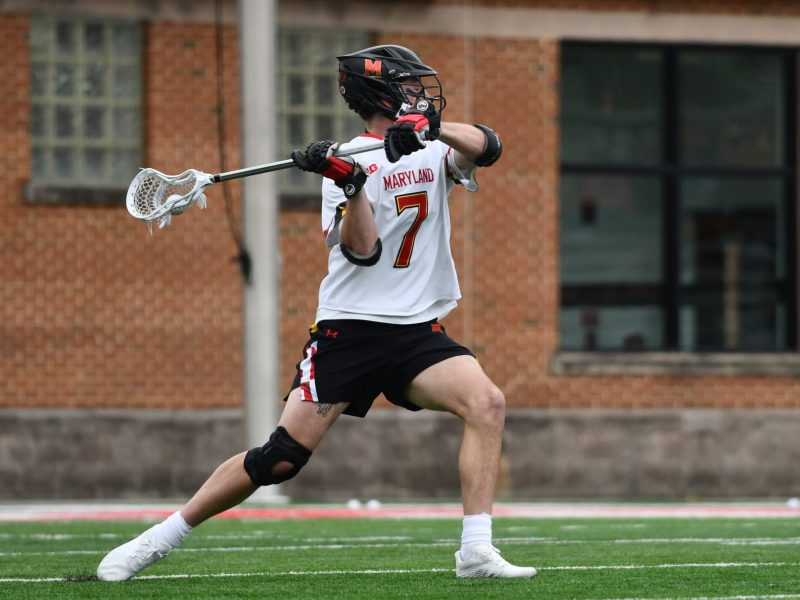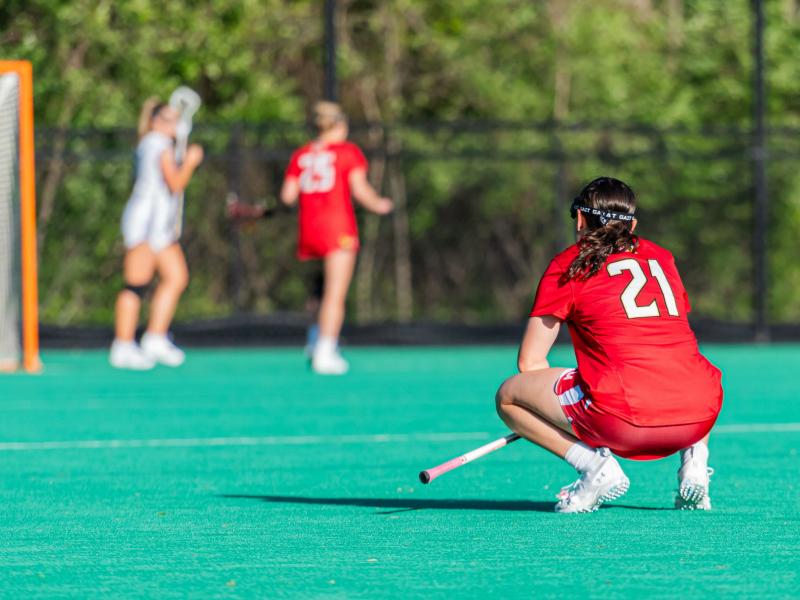When former Terrapin football player Shawne Merriman tested positive for steroids this week, it brought drug testing and steroid use back into the news.
And though Merriman’s playing about 3,000 miles away, it’s become a subject of discussion at this university.
Associate Athletics Director Dave Haglund said the University Health Center administers approximately 750 tests each year, which are conducted in addition to random tests by the NCAA. From the school’s 27 teams, Haglund said roughly 750 athletes are chosen at random for the tests.
Assistant Athletics Director for Sports Medicine Darryl Conway said the Athletics Department’s drug testing program was instituted in 1987. It is used in conjunction with the NCAA drug testing and follows the same guidelines. Both organizations test for a wide variety of drugs including stimulants, anabolic steroids, diuretics, hormones and street drugs.
It is theoretically possible for an athlete to go through his entire career without being tested by the school or the NCAA.
Former Terp wide receiver Danny Melendez told The Diamondback he had only been tested for steroids once during his career, but other players – both current and former – have said random tests are taken about every two weeks. The tests “may include procedures for detection of any one or any combination of” a series of drugs, which include inhalants, prescription drugs, NCAA banned substances and steroids, according to the student-athlete handbook.
An athlete is chosen from the overall database at random by the health center, and he or she is then contacted by the Athletics Department and given between two and four hours to report to the health center to provide a urine sample, Haglund said. If an athlete fails to appear within the given window, it is treated as the equivalent of a positive test.
Sacared Bodison, director of student health at the health center, referred questions about drug testing to the Athletics Department, saying the center only “provided the service” for student-athlete drug testing.
Haglund said the random selection process keeps preferential treatment toward certain athletes from being an issue.
“There’s no possible human interference in our testing system,” he said. “It’s all done by computer.”
A three-strike rule is in effect for positive results, according to the University of Maryland Drug Policy for Student Athletes. The first time an athlete tests positive for a banned substance, he or she is forced to undergo counseling and further drug testing, and the athlete cannot be disciplined by the coaching staff.
Upon a second positive test result, an athlete is suspended for two weeks from all team activities along with more counseling and testing. A third offense guarantees an athlete will be suspended from his or her team for a full year and banned from Athletics Department facilities. The athlete can also be kicked out of the program.
The NCAA began its official drug testing program in 1986, and this university’s Athletics Department seemed to be ahead of the curve with its drug policy.
But no system is perfect.
“I don’t think any program is comprehensive enough to prevent this … from the NFL to the Olympics,” Conway said.
Dr. Richard J. Auchus, a steroid expert from the University of Texas-Southwestern Medical Center, said the chemists are always ahead of the testers.
While the university’s testing program allows for a positive test before an athlete is suspended, the NCAA isn’t so forgiving, suspending athletes with positive tests for one calendar year. It administers tests randomly during the year and also at championship events.
The NCAA and the university’s Athletics Department require athletes to sign drug testing consent forms to be eligible to play, according to the organizations’ bylaws and handbooks. The NCAA also shows athletes a video explaining the banned substances and the testing policy, pointing to physical problems and loss of playing time as reasons not to use drugs. Both the department and the NCAA allow for appeals, and there is a possibility that athletes who test positive can be reinstated at a later time, as stated in the NCAA drug testing bylaws.
In 2004-05, the NCAA conducted 10,094 year-round tests and 1,516 tests at championship events. Of the 86 positives – not including no-shows or other technical issues – 51 were from steroids.
As first reported by ESPN.com earlier this week, Merriman tested positive for steroids. Merriman’s attorney, David Cornwell, said he believed Merriman tested positive for nandrolone, which is known as a muscle-building supplement very similar to testosterone. Cornwell blamed the positive test result on a tainted supplement. A source told ESPN.com that the positive test was “definitely for steroids … not one of those supplement deals.”
Auchus said nandrolone is most commonly injected but added that in can be taken orally. Still, he contended that it’s more of an amateur drug because remnants remain in athletes’ systems for a long time.
Merriman’s weight never apparently fluctuated during his college career. He weighed in at 240 pounds as a freshman and at 245 pounds as a junior, according to rosters from those seasons.
Because of that, a couple of Merriman’s Terp teammates said they didn’t think he took any steroids while in college. Haglund declined to comment on Merriman, citing the fact that he didn’t want to talk about specific individuals. Former Terp wide receiver Jamal Gardner emphasized how Merriman worked hard, lifted weights and drank protein shakes – which made his pre-draft weight gain suspicious.
While his Terp career ended in November 2004, Merriman weighed in at 249 pounds at the NFL scouting combine in February 2005. He is now listed at 272 pounds on San Diego’s roster.
Auchus said gaining that much weight over a short amount of time is physically possible without the aid of steroids, but it’s not common.
“With steroids, it’s pretty easy,” Auchus said. “Studies have shown that, even without exercise, you take high doses of testosterone, you gain weight. … Without [performance-enhancing drugs], it’s harder.”
Contact reporters Robert Klemko and Stephen Whyno at whynodbk@gmail.com.


